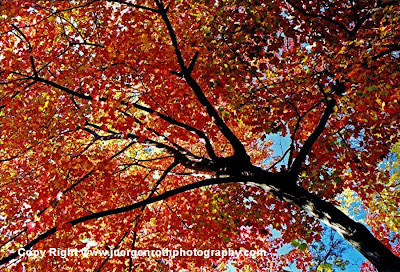 New England autumn colors are famous throughout the
world. Visitors flog to the Northeast from all over the world to experience the
marvelous autumn glory in the Acadia National and State Parks of Maine, Rode Island, Connecticut, Massachusetts and
Vermont. New York State to the west and the Great Smokey Mountains further down
east are 2 more prime destination for fall foliage peeping and photography. In
this latest photography blog post I compiled 15 photo tips on how to obtain
glorious fall foliage photos with our photography gear and take home beautiful
artwork memories. This blog post links to other related topics that deepen the
understanding of correct exposure, depth of field or how to use your tripod
correctly ... hope you explore and enjoy!
New England autumn colors are famous throughout the
world. Visitors flog to the Northeast from all over the world to experience the
marvelous autumn glory in the Acadia National and State Parks of Maine, Rode Island, Connecticut, Massachusetts and
Vermont. New York State to the west and the Great Smokey Mountains further down
east are 2 more prime destination for fall foliage peeping and photography. In
this latest photography blog post I compiled 15 photo tips on how to obtain
glorious fall foliage photos with our photography gear and take home beautiful
artwork memories. This blog post links to other related topics that deepen the
understanding of correct exposure, depth of field or how to use your tripod
correctly ... hope you explore and enjoy!
Photo Tip #1: Plan your New England fall foliage leaf peeping or
photography trips well in advance this year and at peak times. There are many
sites that provide the required information. The Foliage Network
is one of the best and this website provides accurate foliage reports for color
and leaf drop. "High Color" is the best time to find these glorious
New England fall colors.
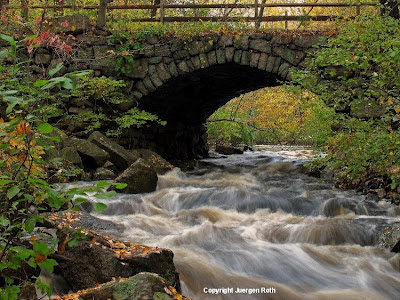 Photo Tip #2:
Use a Polarizing Filter to boost color and balance the contrast in your
photography image. The filter eliminates unwanted and distracting glare and
reflections on wet leaves and one can think of it as sunglasses for your
camera. Overall, these filters increase color saturation, boost blue sky, add
cloud contrast, control reflections and add neutral density to lengthen
exposure times for blurred, impressionistic images.
Photo Tip #2:
Use a Polarizing Filter to boost color and balance the contrast in your
photography image. The filter eliminates unwanted and distracting glare and
reflections on wet leaves and one can think of it as sunglasses for your
camera. Overall, these filters increase color saturation, boost blue sky, add
cloud contrast, control reflections and add neutral density to lengthen
exposure times for blurred, impressionistic images.
Photo Tip #3:
Utilize lowest possible ISO settings like ISO 100 and below for higher quality
pictures. Do not use your camera Auto ISO setting since at low light conditions
it will adjust to higher ISO settings that may produces more noise. Instead get
in the habit of using your tripod even when sufficient light is available … on
a different note using our tripod will benefit in better and more pleasing compositions
as well.
 Photo Tip #4:
Consider the weather forecast. For example get out after a rain storm has
passed to take advantage of beautiful lighting conditions when the sunlight
breaks through and provides us with spectacular lighting conditions on fall
foliage. Air is clearest in the morning and after rain making for good times to
strive for stunning and scenic autumn landscape photography compositions.
Photo Tip #4:
Consider the weather forecast. For example get out after a rain storm has
passed to take advantage of beautiful lighting conditions when the sunlight
breaks through and provides us with spectacular lighting conditions on fall
foliage. Air is clearest in the morning and after rain making for good times to
strive for stunning and scenic autumn landscape photography compositions.
Photo Tip #5:
Do not be fooled and discouraged by overcast and rainy day weather forecasts. Cloudy
days make for beautiful balanced light and provide us photographers with
minimal wind and beautiful light to capture sharp details in leaves and trunks.
Rain drops on leaves make for excellent macro photography images and wet leaves
bring out colors even more.
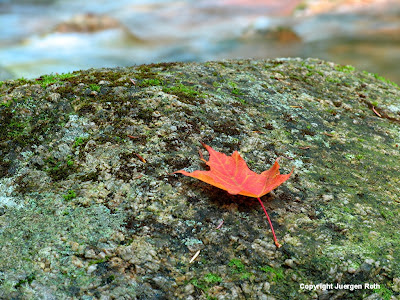 Photo Tip #6:
Eliminate overcast sky by using your telephoto lens to achieve tighter, more Intimate Landscape compositions that are more beneficial and interesting.
Photo Tip #6:
Eliminate overcast sky by using your telephoto lens to achieve tighter, more Intimate Landscape compositions that are more beneficial and interesting.
Photo Tip #7:
Look for warm autumn hues and combine them with their complementary colors for
high color contrast imagery; For example golden, yellow or orange foliage
combined with a saturated blue sky or red maple leaves works well with an
evergreen background, all making for fabulous autumn images.
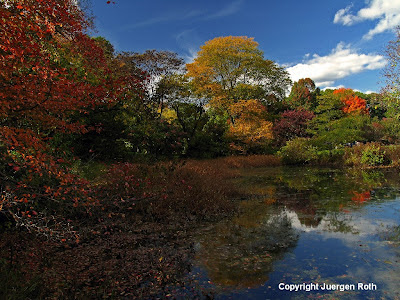 Photo Tip #8:
Photograph fall colors on bright sunny days at Mid Range Aperture setting to add additional depth to images
when including a blue sky in the compositions. The sunlight really makes the
colors pop.
Photo Tip #8:
Photograph fall colors on bright sunny days at Mid Range Aperture setting to add additional depth to images
when including a blue sky in the compositions. The sunlight really makes the
colors pop.
Photo Tip #9:
Find inspiration in waterfalls framed by beautiful foliage colors or get close
with still tree leaves on the ground and on rocks in rushing creeks and brooks.
Overcast and cloudy sky provides excellent conditions for such photo objects.
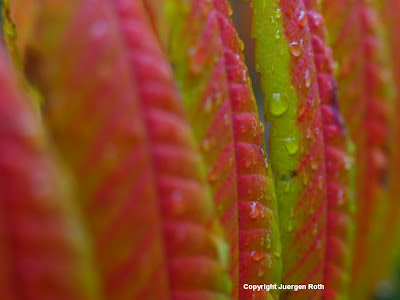 Photo Tip #10:
Photograph during the morning or afternoon sunlight when light is at its best
and leaves are sun-kissed by the beautiful sunlight thereby illuminating the
colors of fall foliage.
Photo Tip #10:
Photograph during the morning or afternoon sunlight when light is at its best
and leaves are sun-kissed by the beautiful sunlight thereby illuminating the
colors of fall foliage.
Photo Tip #11:
Capture beautiful autumn, razor sharp and Mirror-Like Reflections in ponds and
lakes. Too windy for that ... no problem, create artistic impressionistic
images within the tiny waves or with foliage in motion.
 Photo Tip #12:
Saturate and intensify colors by underexposing your photos slightly.
Photo Tip #12:
Saturate and intensify colors by underexposing your photos slightly.
Photo Tip #13:
Use a Steady Tripod or fast shutter speeds to maximize image quality.
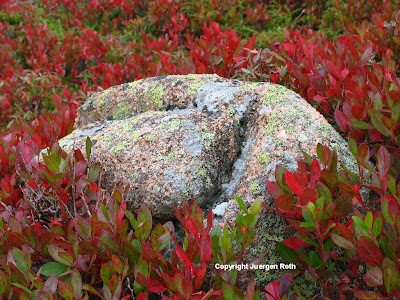 Photo Tip #14:
Use the camera self timer, a cable release or remote release to trip the
shutter. If not using live view use mirror lock up to minimize camera shake and
blurry pictures.
Photo Tip #14:
Use the camera self timer, a cable release or remote release to trip the
shutter. If not using live view use mirror lock up to minimize camera shake and
blurry pictures.
Photo Tip #15:
Do not ditch November and December when leaves are on the ground and make for
beautiful Macro Photography pictures. Visit your local sites to get in close
and extend fall foliage photography season for a couple of months.
























